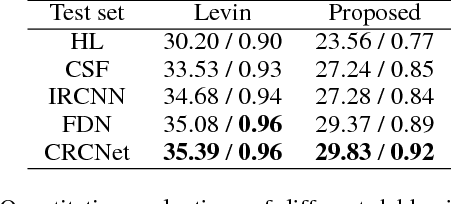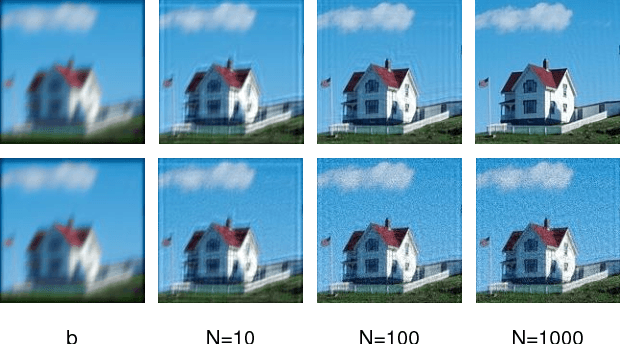Li Si-Yao
Iterative Residual Image Deconvolution
Nov 04, 2018



Abstract:Image deblurring, a.k.a. image deconvolution, recovers a clear image from pixel superposition caused by blur degradation. Few deep convolutional neural networks (CNN) succeed in addressing this task. In this paper, we first demonstrate that the minimum-mean-square-error (MMSE) solution to image deblurring can be interestingly unfolded into a series of residual components. Based on this analysis, we propose a novel iterative residual deconvolution (IRD) algorithm. Further, IRD motivates us to take one step forward to design an explicable and effective CNN architecture for image deconvolution. Specifically, a sequence of residual CNN units are deployed, whose intermediate outputs are then concatenated and integrated, resulting in concatenated residual convolutional network (CRCNet). The experimental results demonstrate that proposed CRCNet not only achieves better quantitative metrics but also recovers more visually plausible texture details compared with state-of-the-art methods.
Understanding kernel size in blind deconvolution
Jul 05, 2018



Abstract:Most blind deconvolution methods usually pre-define a large kernel size to guarantee the support domain. Blur kernel estimation error is likely to be introduced, and is proportional to kernel size. In this paper, we experimentally and theoretically show the reason of noises introduction in oversized kernel by demonstrating that sizeable kernels lead to lower optimization cost. To eliminate this adverse effect, we propose a low rank-based regularization on blur kernel by analyzing the structural information in degraded kernels. Compared with the sparsity prior, e.g., $\ell_\alpha$-norm, our regularization term can effectively suppress random noises in oversized kernels. On benchmark test dataset, the proposed method is compared with several state-of-the-art methods, and can achieve better quantitative score. Especially, the improvement margin is much more significant for oversized blur kernels. We also validate the proposed method on real-world blurry images.
 Add to Chrome
Add to Chrome Add to Firefox
Add to Firefox Add to Edge
Add to Edge